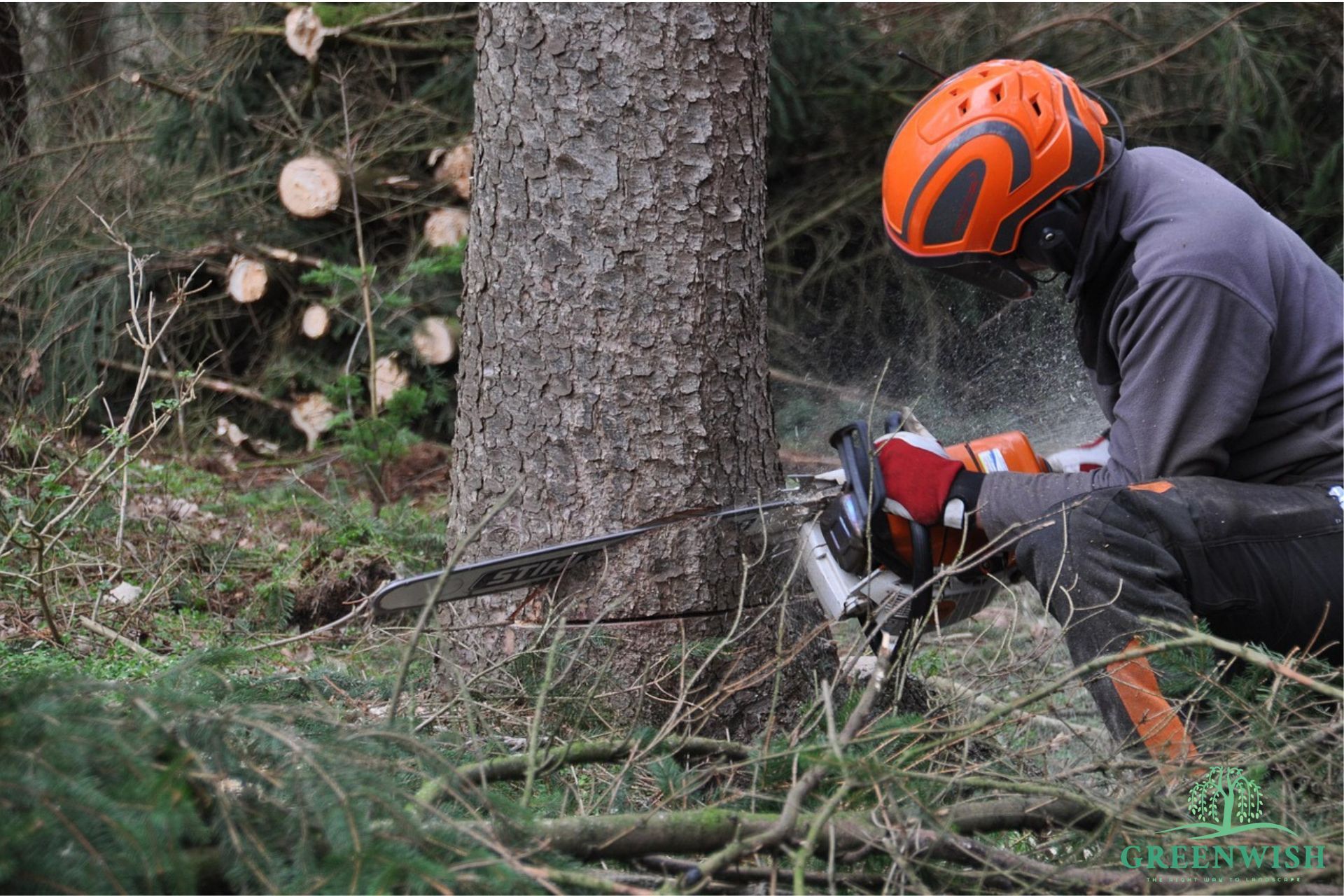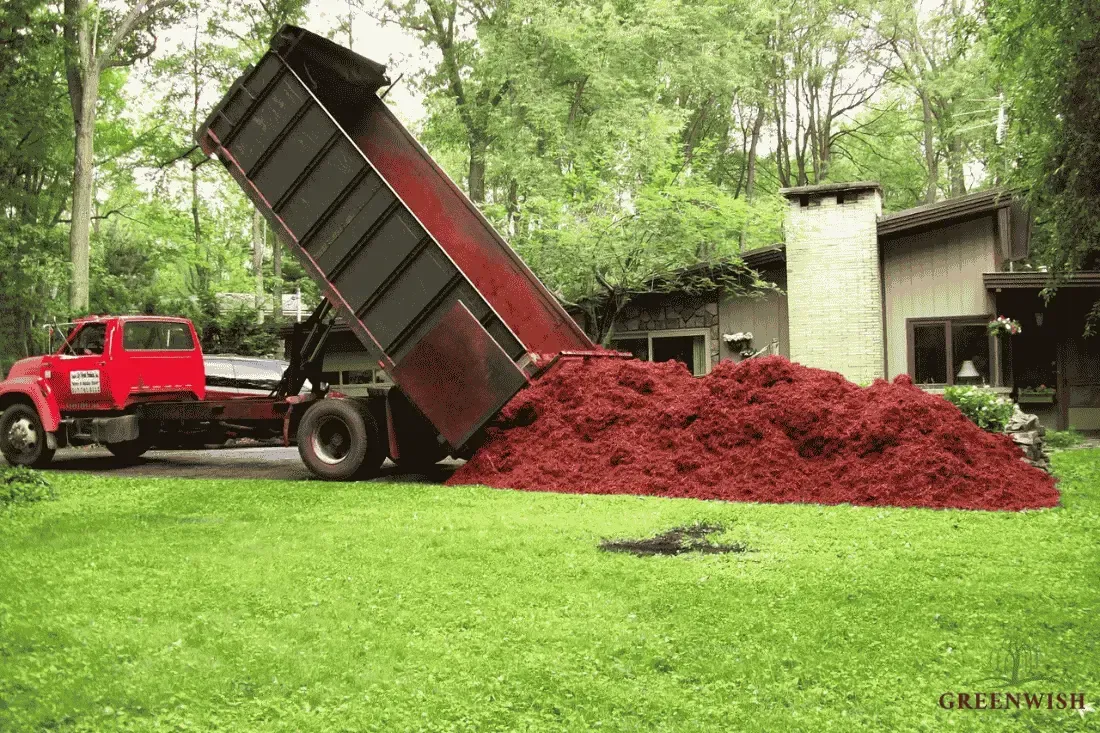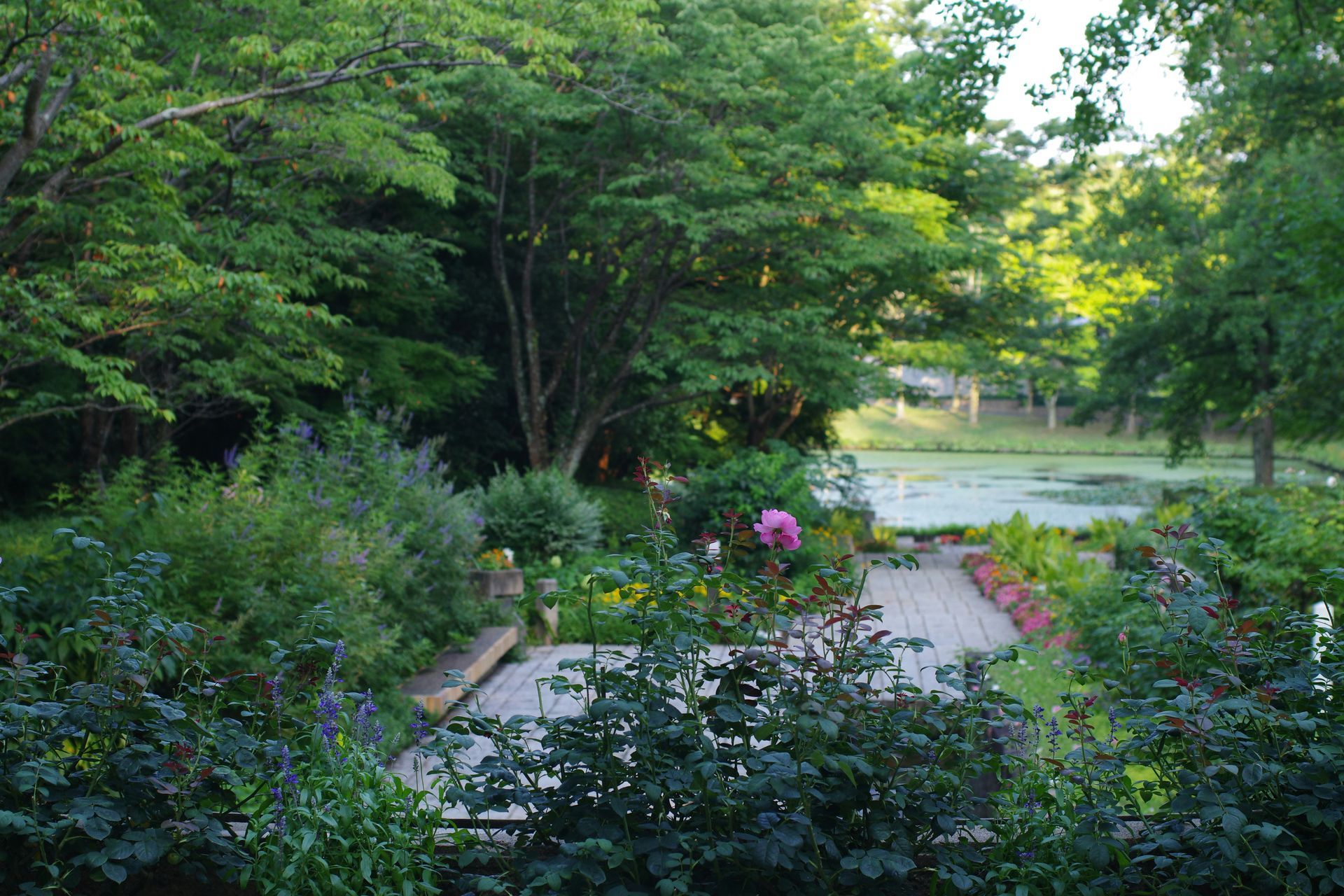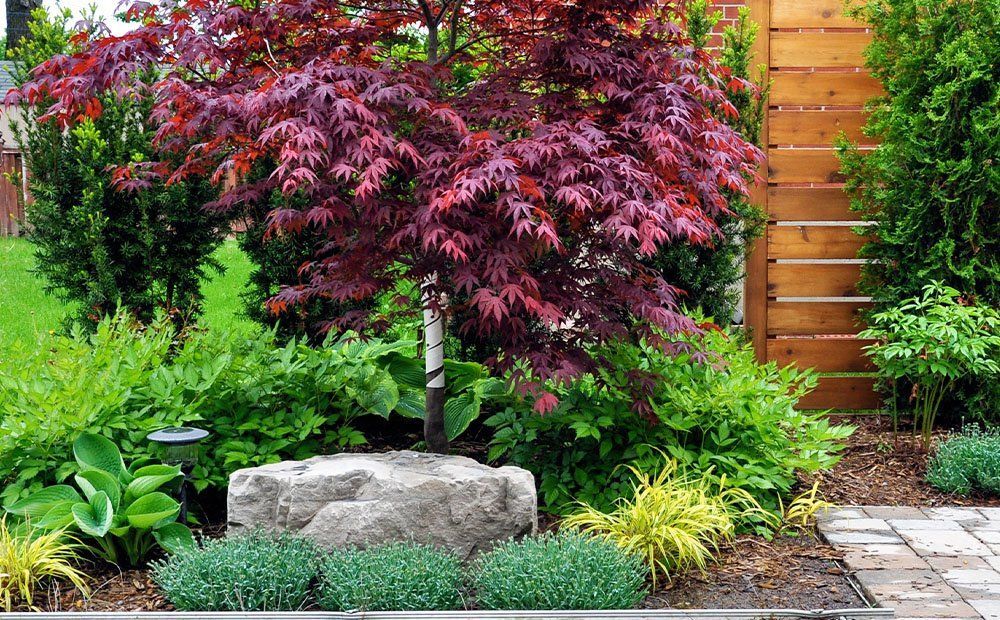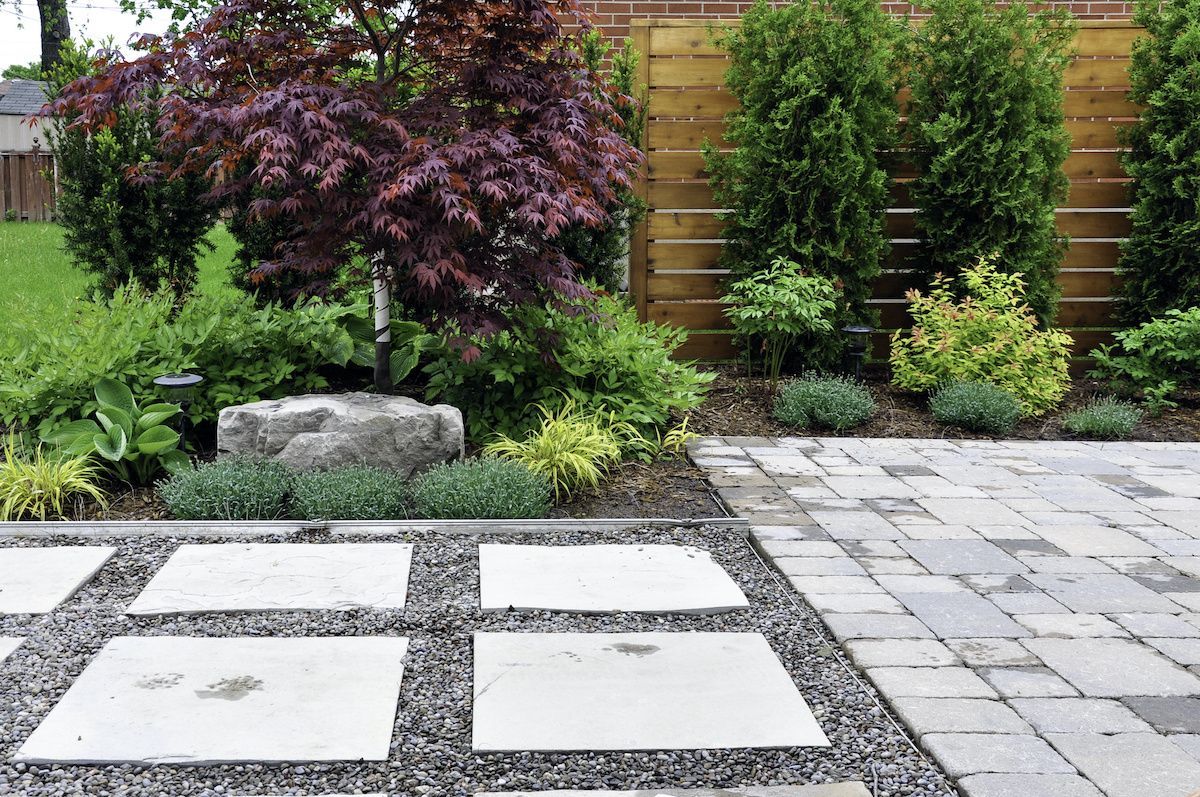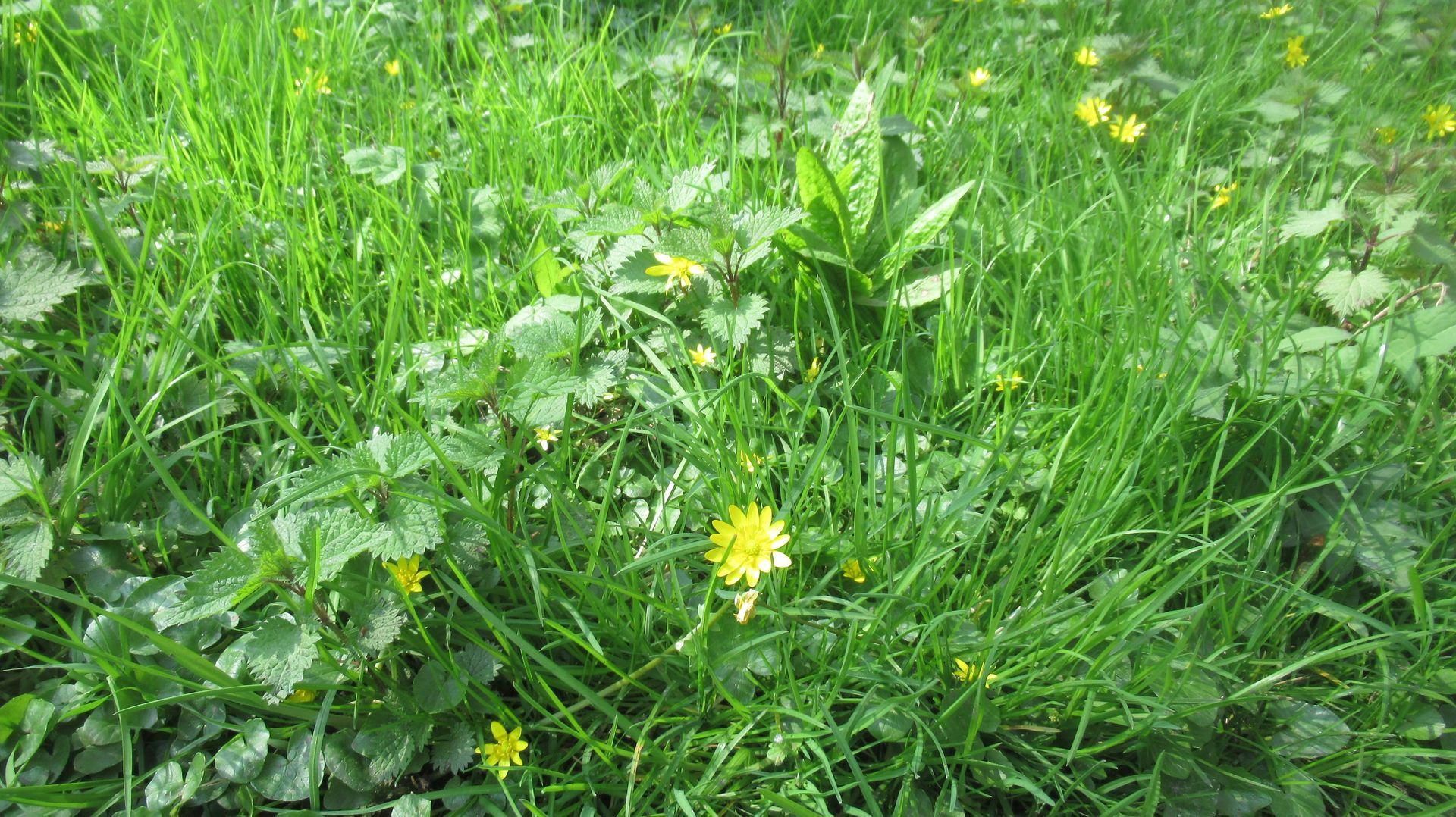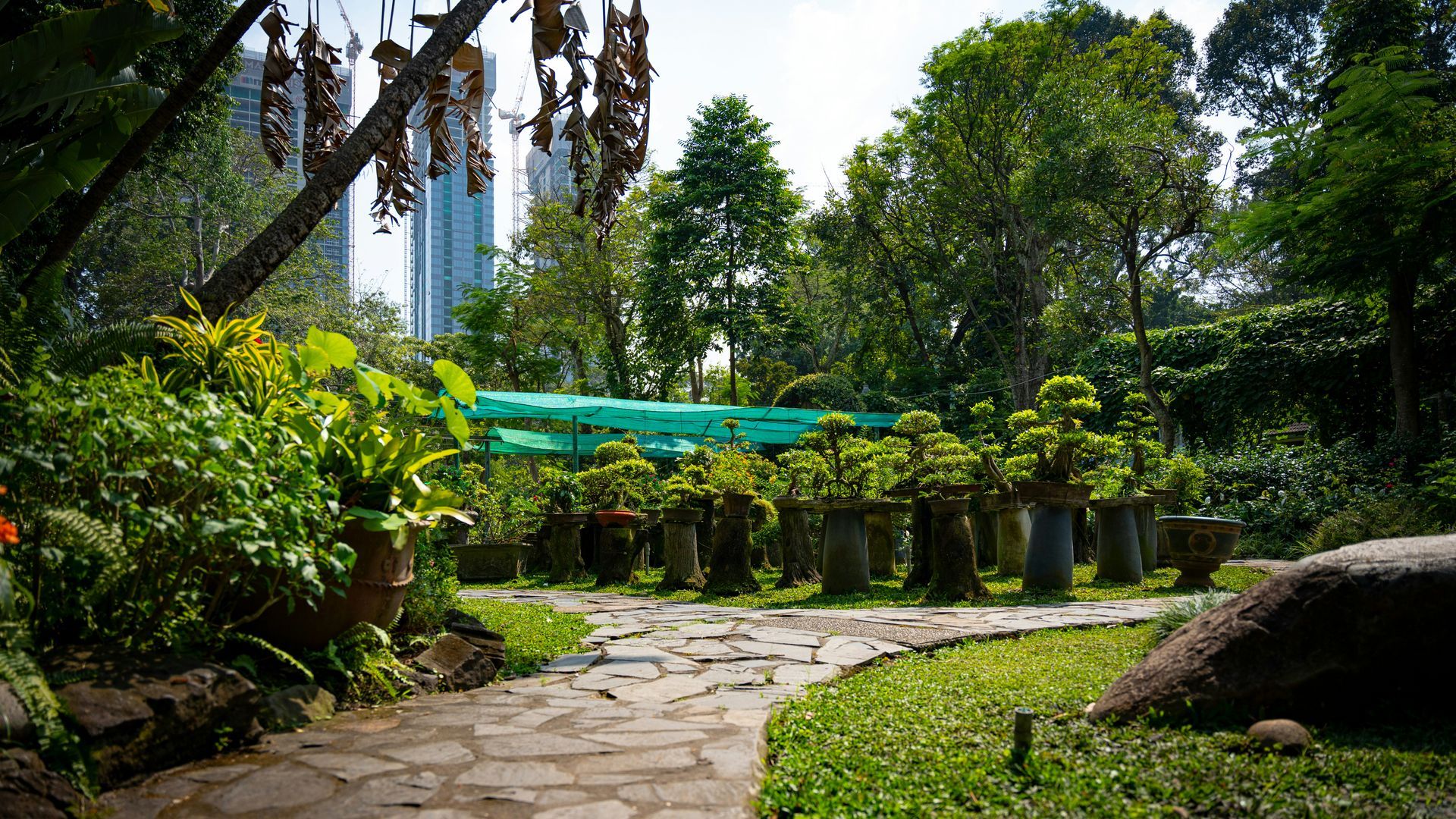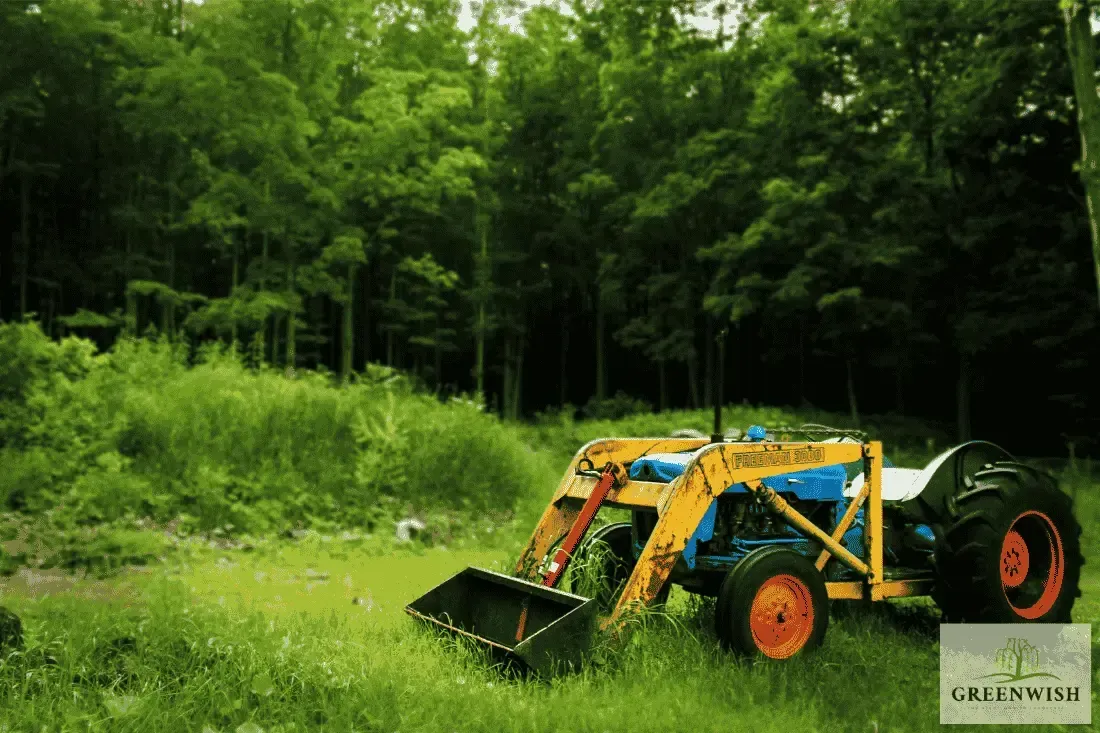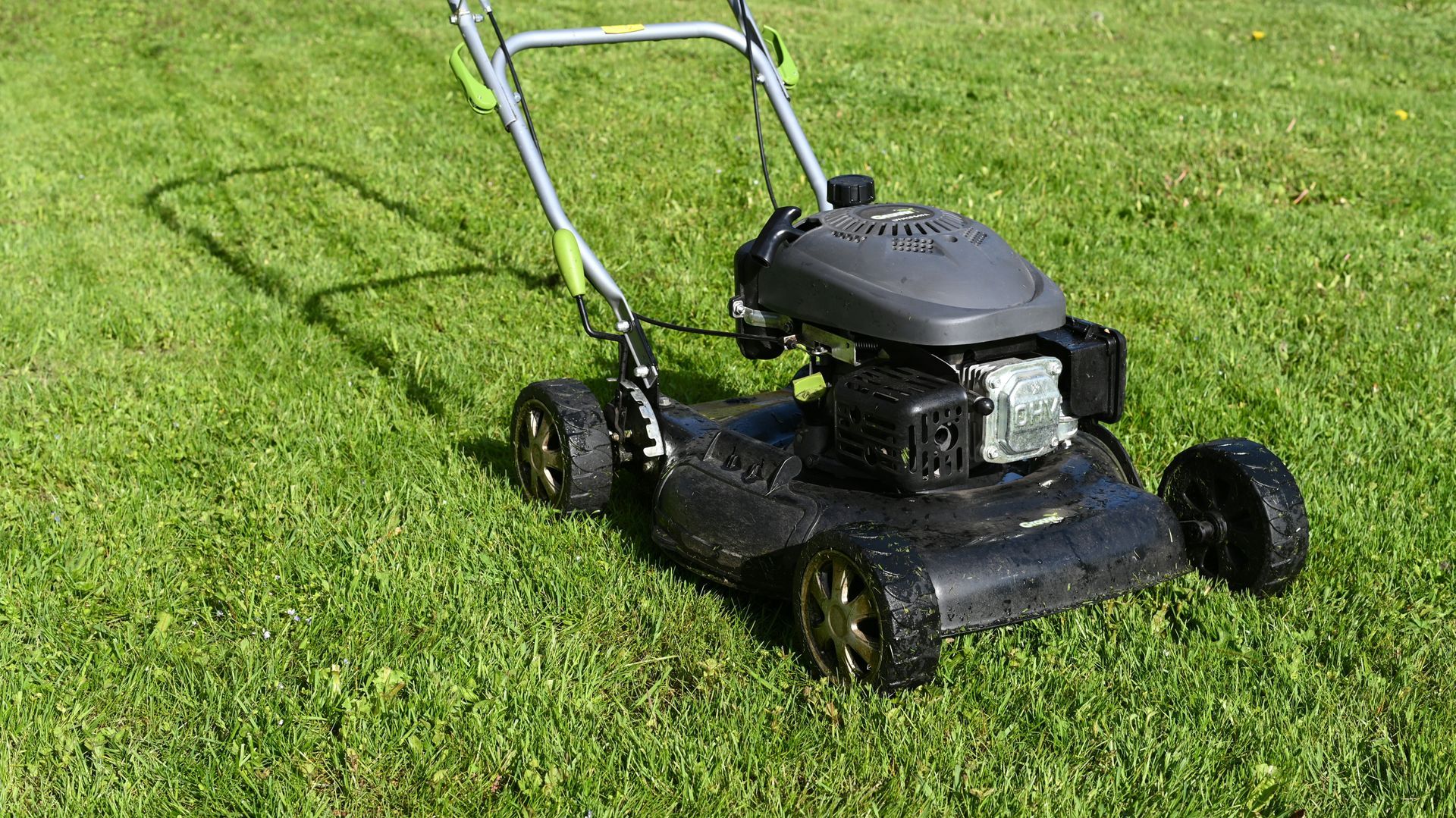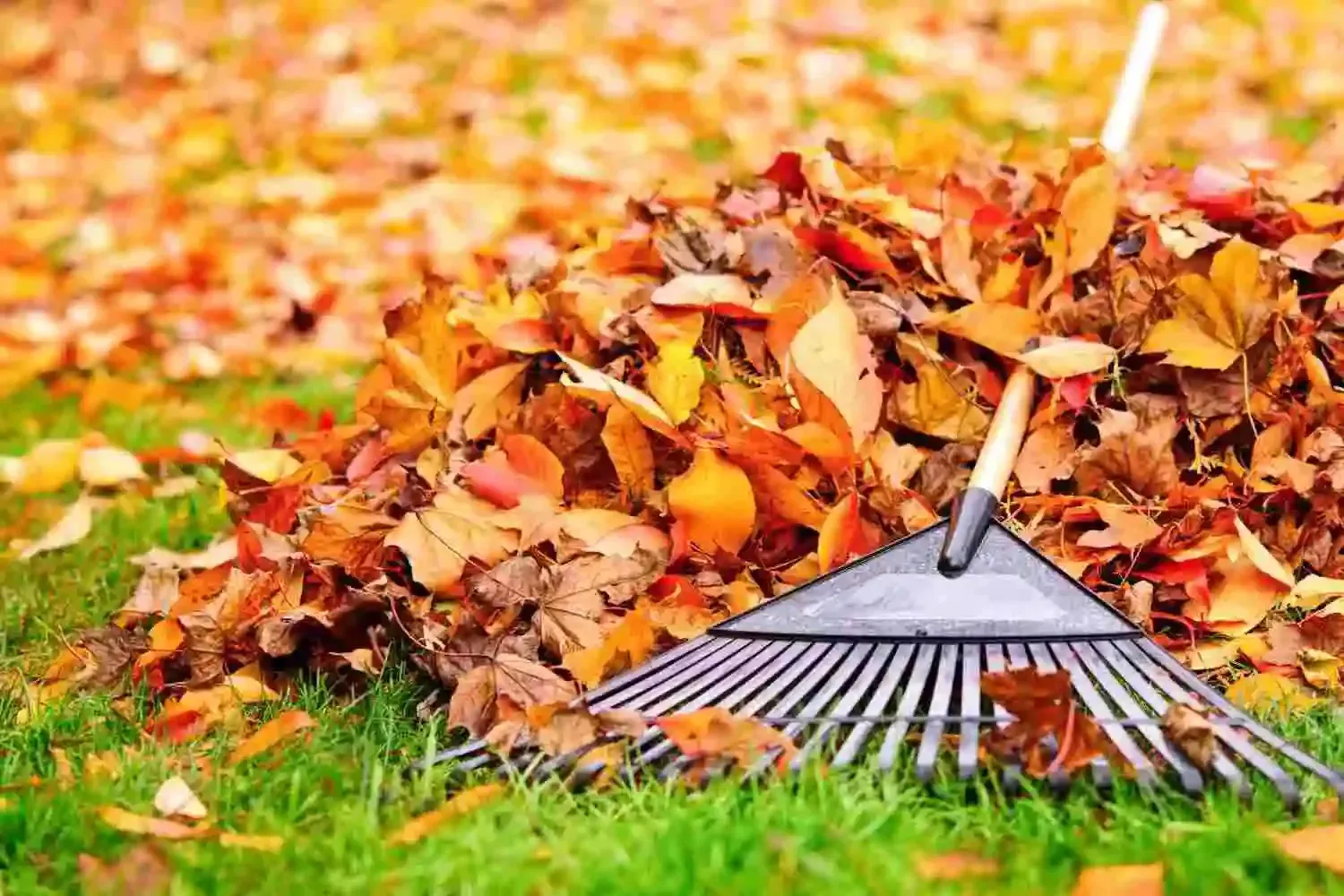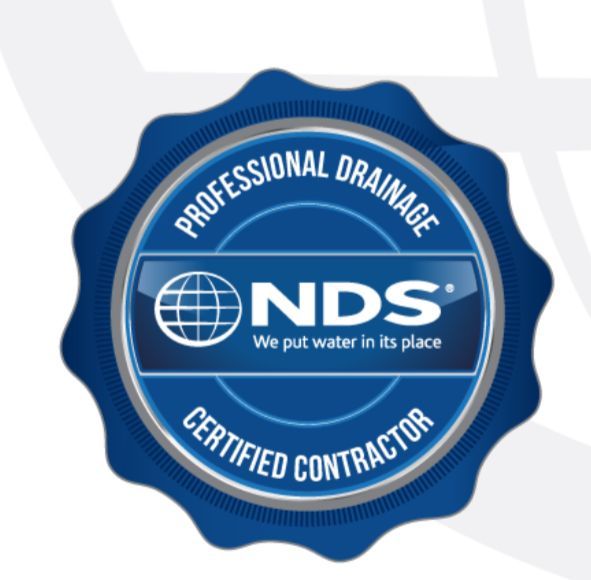Carpet Grass Guide 2025: How to Grow, Care, Control & Choose the Best Lawn Grass
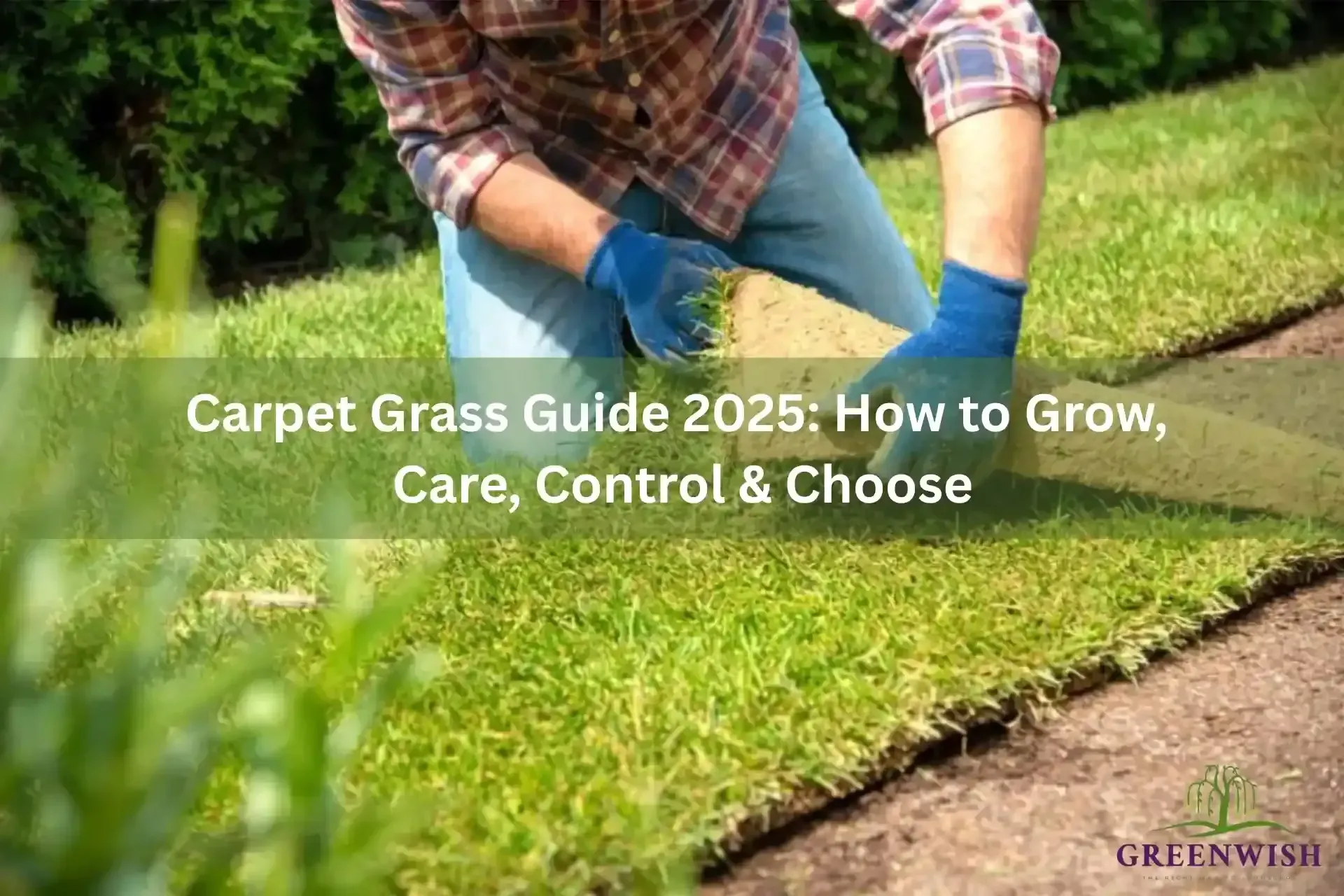
When it comes to low-maintenance, warm-season grasses, carpet grass is one of the most underrated yet widely misunderstood lawn options. Whether you're a homeowner trying to grow a thick, green lawn or a landscaper dealing with unwanted patches of carpet grass as a weed, this 2025 guide will help you make sense of it all.
From learning how to grow carpet grass, to caring for it, to knowing when to control or eliminate it, we’ve broken it all down based on the latest lawn care trends, especially for regions like Manassas, VA and similar southern climates.
If you’ve ever asked:
- “Is carpet grass good for lawns?”
- “How do I kill carpet grass invading my Bermuda?”
- “What does carpet grass even look like?”
- “How do I grow carpet grass near me “
Then this blog is exactly what you need. Let’s dive in.
What is Carpet Grass?
Carpet grass (Axonopus compressus or Axonopus fissifolius) is a warm-season perennial grass commonly found in the southeastern United States. It gets its name from its dense, mat-like growth habit that spreads quickly and covers the ground evenly, like a “carpet.”
Unlike fussy turf types, carpet grass thrives in poor soils, high humidity, and full sunlight. It is often used in residential lawns, roadside landscaping, public parks, and even low-traffic sports fields due to its affordability and spread.
Carpetgrass Identification & Appearance
Wondering what carpet grass looks like? Here are the tell-tale signs:
- Leaf blades are smooth, flat, and rounded at the tip.
- Growth pattern is creeping and forms a low-growing, weed-suppressing mat.
- It grows up to 6–12 inches tall and features seed heads with two spikes when allowed to mature.
- It prefers moist, acidic soils and is more common in the southeastern U.S., especially in Virginia, Florida, Louisiana, and Texas.
Tip: This is often confused with other grasses, so carpetgrass identification is crucial for proper care or removal.
Types of Carpet Grass: Common & Broadleaf
There are mainly two types of carpet grass:
- Common Carpetgrass (Axonopus affinis)
– The most frequently found type in lawns; known for its fine texture.
- Broadleaf Carpetgrass (Axonopus compressus)
– Slightly wider leaves and used in tropical to subtropical climates.
Both are fairly drought-tolerant once established and require minimal fertilization. However, they can become invasive if not properly managed.
Carpet Grass vs Crabgrass: Not the Same Thing
A lot of homeowners confuse carpet grass with crabgrass, but they’re not the same.
Carpet Grass
- Type: Warm-season perennial
- Growth: Creeping, mat-forming
- Desirable? Sometimes (used for lawns)
- Control Needed? Depends
Crabgrass
- Type: Warm-season annual
- Growth: Clumping
- Desirable? No (always a weed)
- Control Needed? Yes, usually removed
While carpet grass can be intentional, crabgrass is considered a weed 100% of the time.
Carpet Grass vs Bermuda Grass: Pros & Cons
Another common comparison: carpet grass vs Bermuda grass.
Bermuda Grass Pros:
- High drought tolerance
- Dense, fine texture
- Excellent for high-traffic lawns
Bermuda Grass Cons:
- Needs frequent mowing
- Invasive if not contained
- Prone to winter dormancy
Carpet Grass Pros:
- Tolerates poor soil and shade
- Requires less mowing
- Suppresses many common weeds
Carpet Grass Cons:
- Not as soft or lush
- Less tolerant to cold and drought
- Coarser texture
If you're stuck between carpetgrass or Bermuda, you should take a decision based on your lawn's location, use, and how much time you have for taking care of your lawn and maintaining it.
Pros and Cons of Carpet Grass Lawns: Should You Grow It in 2025?
You don't have to spend hours every week and use complicated chemicals to make your lawn look perfect. If you’re after a grass that’s easy to care for and quickly fills in your yard, carpet grass might be your best option this year.
But before you decide to plant it, let’s look at the pros and cons of carpetgrass so you can understand what you’re getting into.
Pros of Carpet Grass
Low Maintenance Requirements
- Unlike Bermuda or Zoysia, carpet grass doesn’t require frequent mowing, fertilizing, or watering.
- Grows slowly, stays relatively low (3–6 inches), and has moderate shade tolerance.
Cost-Effective for Large Areas
- Especially for large properties or commercial spaces in Manassas, VA, using carpet grass seed is an affordable way to quickly establish coverage.
- Great option for Residential Landscaping projects with limited budgets.
Weed-Suppressing Ground Cover
- The dense, creeping nature of this grass helps block broadleaf weeds and annual invaders like crabgrass from germinating.
Performs Well in Poor Soil
- Thrives in acidic, sandy, or clay soils, making it ideal for areas where other grasses might fail.
Good for Erosion Control
- Its tight growth habit makes it perfect for sloped lawns or eroded patches, especially in humid southern climates.
Cons of Carpet Grass
Limited Cold Tolerance
- If you’re outside USDA Zones 8–10, this grass may struggle in the winter and could die back or go dormant.
Not a "Luxury Lawn" Look
- The blades are coarser than other turfgrasses. If you’re after a finely manicured golf course aesthetic, carpet grass lawn might feel too rustic.
Can Become Invasive
- In some regions, carpet grass becomes a weed, invading other lawn types like Bermuda grass or flower beds. Hence the need for carpet grass killer options if you don’t want it spreading.
Short Growing Season
- Starts growing later in the spring and stops earlier in the fall compared to other warm-season grasses.
Is Carpet Grass a Weed or a Lawn Hero?
This depends entirely on where you are and what you want.
- If you're in a shady, damp area with poor soil, carpet grass can be a life-saver.
- But if you're maintaining a Bermuda lawn or trying to create a high-end landscape, it may feel more like a nuisance than a solution.
When Carpet Grass is a Problem: Control & Removal
If carpet grass has taken over your Bermuda or fescue lawn, it’s time to consider how to kill carpet grass effectively without damaging your desired turf.
- Use selective herbicides labeled for carpet grass weed control.
- Spot-treat with non-selective killers like glyphosate only in isolated patches.
- Maintain healthy turf density to outcompete carpet grass naturally.
Want professional help? Explore Lawn Care Services in Manassas, VA that offer weed control and seasonal treatments to handle unwanted carpet grass invasions.
How to Grow & Care for Carpet Grass in 2025 (Step-by-Step Lawn Guide)
If you’ve considered the benefits and drawbacks and decided that carpet grass is the right choice for your lawn, that's fantastic! Now, let’s guide you through how to plant and care for your carpet grass — from the initial seeding to maintaining it in the long run. Whether you're updating your yard in Manassas, VA, starting a new lawn, or patching up bare spots, this step-by-step guide has everything you need to succeed in 2025.
Step 1: Identify If Carpet Grass Is Right for Your Zone & Soil
Before you even buy carpet grass seed, make sure your local conditions support it.
- Best suited for USDA Zones 8–10
- Thrives in humid, warm climates
- Prefers acidic soil (pH 5.0 to 6.5)
- Does well in clay or sandy loam
Hint: If you’re in Northern Virginia and struggle with moss or patchy turf, broadleaf carpet grass may thrive where others fail.
Step 2: Prepare the Soil for Planting
Like all grasses, common carpetgrass needs good soil contact to germinate well.
Prep checklist:
- Clear weeds and existing turf
- Lightly till or rake the top 1–2 inches of soil
- Remove debris, stones, and sticks
- Apply lime if your pH is too low (test with a soil kit)
Optional: Add compost or sand to improve drainage and organic content.
Step 3: Seeding Carpet Grass (or Sodding)
You can either seed or lay sod, depending on availability and budget. Seeding is more affordable and practical for most homeowners.
Seeding Tips:
- Best time to plant:
Late spring to early summer
- Seed rate:
1 to 2 pounds per 1,000 square feet
- Water:
Lightly daily until germination (usually within 10–20 days)
Don’t bury the seeds — carpet grass requires light to germinate, so keep them on the soil surface and press them in with a roller or your feet.
Step 4: Watering & Establishment
After seeding or sodding, consistent moisture is crucial.
Watering schedule:
- Week 1–2:
Light watering 1–2 times daily
- Week 3–4:
Water deeper, 2–3 times per week
- After 1 month:
Transition to a standard schedule based on rainfall
Tip: Avoid overwatering. Too much moisture can promote fungal issues and shallow roots.
Step 5: Mowing Carpet Grass
Do you have to mow carpet grass? Yes—but not as often as other grasses.
- Mow height:
1.5 to 2 inches
- Mow frequency:
Every 2–3 weeks in peak season
- Don’t scalp—cutting too low stresses the grass
If you’re running a busy schedule, this is why carpet grass lawns are beloved for their low-maintenance appeal.
Step 6: Fertilization & Soil Health
While carpet grass isn’t a heavy feeder, the right nutrients still help with color and growth.
Best fertilizer for carpet grass:
- Look for a balanced, slow-release fertilizer (e.g., 10-10-10 or 16-4-8)
- Apply 2–3 times/year during the growing season (spring to early fall)
- Avoid high-nitrogen blends—they can promote weed growth instead
For thicker and greener carpetgrass, pair fertilizer with occasional aeration and organic compost topdressing.
Step 7: Pest & Weed Control
Carpet grass is fairly pest-resistant, but weeds, especially crabgrass, can compete if left unchecked.
- Use a pre-emergent herbicide in early spring
- Spot-treat invaders with post-emergent sprays
- Avoid broadleaf herbicides that can damage carpet grass
If you're battling carpet grass vs crabgrass or other invaders, having a local Lawn Care Service in Manassas, VA on standby is smart—especially during spring.
Step 8: Seasonal Maintenance
- Spring:
Dethatch, test soil, apply pre-emergent, fertilize
- Summer:
Mow regularly, water deeply, control pests
- Fall:
Fertilize lightly, overseed if needed, reduce mowing
- Winter:
Let it go dormant. Avoid heavy foot traffic.
Bonus Tips:
- Use a mulching mower to return nutrients to the soil
- Overseed bare patches in late spring
- Keep an eye on pH—acidic soil is critical for healthy growth
How to Control or Kill Carpet Grass (When It's an Unwanted Weed)
Many homeowners intentionally plant carpet grass because it’s low-maintenance and attractive. However, some find it becoming a nuisance, especially when it spreads into their Bermuda or Zoysia lawns — particularly in the Southern states and parts of Virginia.
In this section, we’ll explain how to identify carpet grass, why it sometimes behaves like a weed, and the best methods for controlling or removing it without harming your lawn.
What Does Carpet Grass Look Like? (Identification Guide)
Before you attempt removal, make sure you’re actually dealing with common carpetgrass.
Key characteristics:
- Light green color
- Wide, flat blades with a blunt tip
- Creeping growth habit, forming dense mats
- Forms seedheads with 2–3 spikes (Y-shaped)
Pro Tip: Many confuse carpet grass vs crabgrass. But crabgrass is coarser, fuzzier, and has finger-like seedheads. Carpetgrass is smoother and forms denser mats.
Use this visual guide for carpetgrass identification if you're still unsure.
Why Carpet Grass Becomes a Problem
Though it’s great for erosion control and acidic soils, carpet grass can become invasive in:
- High-pH (alkaline) lawns
- Bermuda or tall fescue lawns
- Commercial properties or golf greens
- Flowerbeds and mulch borders
In these areas, it spreads aggressively and outcompetes higher-value turf grasses, making it a real nuisance.
How to Kill Carpet Grass (Safely & Effectively)
If carpet grass is invading your lawn, you have two main options:
1. Spot Treatment with Herbicide
Use a selective carpetgrass killer that targets weedy grasses but spares your desired turf.
Use a grass-specific herbicide with active ingredients like:
- Fenoxaprop
- Fluazifop
- Sethoxydim (great for fescue and ornamentals)
- Apply in early summer when the carpetgrass is actively growing
- Avoid spraying on hot days to reduce turf stress
Look for products labeled for “carpet grass weed control” and test on a small patch before full application.
2. Manual Removal or Solarization (For Flowerbeds or Borders)
For small areas or where chemical use isn’t desired:
- Pull by hand (roots included)
- Lay black plastic or cardboard over patches for 4–6 weeks
- Replant with mulch, groundcover, or desired turf
This works especially well for residential landscaping makeovers or garden borders.
Caution: Don't Use Broad-Spectrum Herbicides Lightly
Non-selective herbicides like glyphosate (RoundUp) can kill carpet grass and everything else around it — including Bermuda, Zoysia, and ornamentals.
Only use them when:
- You're renovating your entire lawn
- You plan to reseed or resod afterward
Prevention Tips: Stop Carpet Grass From Coming Back
- Mow regularly to prevent seedhead formation
- Apply pre-emergent herbicides in early spring
- Maintain a healthy, dense turf (the best natural defense)
- Test and adjust your soil pH — carpet grass hates neutral or alkaline soil
If you’re dealing with a mixed turf lawn (say, bermuda grass vs carpet grass) and want to favor Bermuda, adjust your care practices:
- Raise your mowing height slightly
- Apply high-nitrogen fertilizer (Bermuda loves it, carpet grass doesn’t)
For Professional Help:
Many homeowners in Virginia search “carpet grass near me” or contact Lawn Care Services in Manassas, VA to handle severe infestations. A professional can analyze your soil, apply the right treatments, and recommend a long-term landscaping solution.
Carpet Grass vs. Other Lawn Grasses: How It Compares to Bermuda, Crabgrass & More
Choosing the right grass for your lawn isn't just about what grows—it’s about what fits your climate, maintenance level, and long-term goals. Let’s break down how carpet grass compares to other popular grasses like Bermuda grass, crabgrass, and other turf options used in residential landscaping and lawn care services in Manassas, VA.
Carpet Grass vs Bermuda Grass
These two grasses are often compared because they both thrive in warm climates. But they’re suited for different lawn goals.
Carpet Grass
- Color: Light green
- Growth Habit: Creeping, low-growing
- Sun Needs: Partial to full sun
- Soil Preference: Acidic, poor soils
- Mowing Needs: Low (infrequent)
- Durability: Moderate
Bermuda Grass
- Color: Darker green
- Growth Habit: Dense, aggressive
- Sun Needs: Full sun only
- Soil Preference: Well-drained, fertile
- Mowing Needs: High (frequent)
- Durability: Very high (great for sports turf)
Carpet grass is better for shaded, acidic, or low-traffic areas.
Bermuda is best for full-sun, high-traffic, manicured lawns.
Pros and Cons of Bermuda Grass
- Pros:
Fast-growing, drought-tolerant, thick coverage
- Cons:
Invasive, high-maintenance, goes dormant (brown) in winter
Carpet Grass vs Crabgrass
While carpet grass is a desirable turf in the Southeast, crabgrass is almost always unwanted.
Carpet Grass
- Purpose: Used as turf in some lawns
- Leaf Texture: Smooth, wide blades
- Growth: Spreads via stolons
- Control: Can be killed selectively
- Mow Height: 1.5–2 inches
Crabgrass
- Purpose: Invasive weed
- Leaf Texture: Coarse, fuzzy blades
- Growth: Spreads aggressively from seeds
- Control: Requires pre-emergents or spot-killers
- Mow Height: Try not to let it grow at all!
If you’re comparing carpet grass vs crabgrass, the takeaway is simple:
Carpet grass may be intentional. Crabgrass never is.
Carpet Grass vs Other Common Grasses in Virginia
If you’re in Northern Virginia, here’s how carpet grass stacks up against other options you might be considering:
Carpetgrass
- Best For: Acidic, wet soils
- Key Traits: Low maintenance, spreads fast
Fescue
- Best For: Cooler climates
- Key Traits: Tolerates shade, stays green longer
Zoysia
- Best For: Dense lawns
- Key Traits: Slow to grow, great drought resistance
Bluegrass
- Best For: High-end lawns
- Key Traits: Needs regular care, prefers cooler temps
In short:
- Carpet grass thrives in wet, acidic, warm soil
- Fescue or bluegrass may be better for shady, cool-season lawns
- Zoysia is a good alternative if you want thick coverage and slow growth
Should You Mix Carpet Grass With Other Types?
Generally, no.
Carpet grass doesn’t blend well with high-maintenance grasses like Bermuda or Kentucky bluegrass. It often outcompetes them in poor soils, but looks mismatched in manicured lawns.
Mixing it may result in patchy color, inconsistent texture, and different mowing needs—which makes maintenance harder, not easier.
Pro Tip from Local Landscapers
Experts from Lawn Care Services in Manassas, VA recommend:
- Use carpet grass for specific use cases: low-maintenance lawns, erosion control, acidic soils.
- Choose Bermuda or Zoysia if you want a durable, high-end finish.
- Don’t fight nature: Match your grass to your climate and soil, not just what looks good on Pinterest.
How to Mow, Maintain & Fertilize Carpet Grass for a Healthy Lawn
Carpet grass might be low-maintenance, but like any lawn, it still needs consistent care to look its best. Proper mowing, fertilization, and seasonal maintenance will help you grow a healthy, thick, and green carpet grass lawn—without letting it turn into a weedy mess.
Mowing Carpet Grass: How Often & How Short?
Do you have to mow carpet grass?
Yes—but not as often as fast-growing grasses like Bermuda.
Ideal Mowing Height:
- 1.5 to 2.5 inches for best results
This height keeps it neat without stressing the grass. Mowing too low can cause brown patches and allow carpet grass weed invaders to creep in.
Mowing Frequency:
- Every 10–14 days in peak season
- Less frequently in fall/winter or shady areas
Pro Tip: Use sharp mower blades and avoid cutting more than 1/3 of the grass height at once. This minimizes shock and encourages healthy regrowth.
Fertilizing Carpet Grass: What It Needs (and Doesn’t)
Unlike nutrient-hungry grasses, carpet grass requires minimal fertilization. In fact, overfeeding it can actually encourage weed growth or overgrowth that turns that tidy look into a tangled mess.
Best Fertilizer for Carpet Grass:
- Choose a slow-release nitrogen fertilizer
- Apply twice a year:
- Early spring to jump-start growth
- Mid-summer to maintain green color
Avoid high-phosphorus or excessive nitrogen blends, which can disrupt the natural balance of your lawn.
What fertilizer makes grass thicker and greener?
- Look for fertilizers with a balanced NPK ratio, like 16-4-8 or 10-10-10
- For organic options, compost tea or fish emulsion can add gentle nutrients
Soil Testing & pH for Carpet Grass
Carpet grass prefers acidic soil with a pH of 5.0 to 6.5. That makes it perfect for certain Southern or humid environments but a poor choice for alkaline or clay-heavy soils.
How to check:
- Do a DIY soil test or ask local Lawn Care Services in Manassas, VA to do it for you
- If the soil is too alkaline, amend it with sulfur or peat moss
Maintaining ideal pH ensures carpet grass grows lush and outcompetes common weeds like crabgrass and dollarweed.
Seasonal Lawn Maintenance Tips for Carpet Grass
Spring:
- Fertilize with a light nitrogen-rich blend
- Begin mowing once grass starts actively growing
- Remove winter debris and dead patches
Summer:
- Water early morning (if needed)
- Mow every 10–14 days
- Watch for brown patch or fungus in humid conditions
Fall:
- Apply second round of fertilizer (optional)
- Overseed bare spots if necessary
- Reduce mowing frequency as growth slows
Winter:
- No fertilizing needed
- Avoid foot traffic on frozen turf
- Clean up fallen leaves to prevent mold
Bonus: Simple Ways to Keep Your Lawn Weed-Free
Even though carpet grass naturally chokes out some weeds, you might still face invaders like crabgrass, dandelions, or broadleaf carpet grass (a more invasive cousin).
Here’s how to stop them:
- Use a pre-emergent weed killer in early spring
- Spot-spray with selective herbicides that won’t kill carpet grass
- Mow high to shade out weed seedlings
- Maintain thick, healthy turf to prevent weed colonization
Wondering how to kill carpet grass if it’s growing where you don’t want it?
- Use a non-selective herbicide like glyphosate (carefully!)
- Solarize patches in summer by covering them with black plastic for 3–4 weeks
- Replace with sod or reseed with your desired grass type
Carpet Grass Identification: What It Looks Like & How to Spot It
If you’re trying to determine whether you have carpet grass in your yard—or if you’re trying to avoid it—it’s important to know what it looks like and how it compares to other common lawn grasses.
Let’s go over the visual features, growth habits, and differences between carpet grass vs crabgrass, carpet grass vs Bermuda, and more.
What Does Carpet Grass Look Like?
Carpet grass (Axonopus spp.), often called common carpetgrass, is a low-growing, coarse-textured grass with a wide blade and light green color.
Key Features:
- Wide, flat blades that grow close to the soil
- Creeping growth habit, forming a dense, carpet-like mat
- Grows in humid, warm climates
- Thrives in poor, acidic soils
- Produces seed heads shaped like two-pronged forks (in late spring/summer)
- Grows aggressively but doesn’t tolerate cold or drought well
It’s often used in residential landscaping across the Southeastern U.S. or tropical zones where year-round rain is common.
Carpet Grass vs Crabgrass: What’s the Difference?
These two are often confused—but they’re not the same.
Carpet Grass
- Growth Habit: Perennial (in warm climates)
- Blade Texture: Coarse and flat
- Lawn Value: Can be used as lawn grass
- Spreads By: Stolons (creeping runners)
- Control Difficulty: Easy to manage in lawns
Crabgrass
- Growth Habit: Annual (dies in winter)
- Blade Texture: Narrow and pointed
- Lawn Value: Considered a weed
- Spreads By: Seeds (fast-growing weed)
- Control Difficulty: Harder to prevent/control
Key Tip: If you’re seeing fast, patchy growth that dies off in winter—it’s likely crabgrass, not carpet grass.
Carpet Grass vs Bermuda Grass: A Closer Look
Another commonly confused pair is carpetgrass vs Bermuda—especially in the South, where both are used in lawns.
Carpet Grass
- Climate Tolerance: Humid, warm climates
- Growth Rate: Moderate
- Mowing Frequency: Less frequent
- Appearance: Coarse, pale green
- Lawn Use: Low-maintenance or low-traffic lawns
- Pros & Cons: Shade-tolerant but short-lived
Bermuda Grass
- Climate Tolerance: Heat and drought-tolerant
- Growth Rate: Fast-growing
- Mowing Frequency: Needs frequent mowing
- Appearance: Fine to medium texture, rich green
- Lawn Use: Sports fields, golf courses
- Pros & Cons: Durable but invasive
Wondering about the pros and cons of Bermuda grass?
While Bermuda grass is hardy and lush, it can become invasive and requires constant mowing. Carpet grass, in contrast, is low-effort but less tolerant to extreme heat or foot traffic.
Types of Carpet Grass (Yes, There’s More Than One!)
There are a few types of carpet grass you might encounter:
- Axonopus affinis – Most common lawn variety. Tolerates mowing and light traffic.
- Axonopus compressus – Also called broadleaf carpet grass. Wider blades, more shade-tolerant but more aggressive.
- Axonopus fissifolius – Sometimes confused with affinis. Similar texture but less cold-tolerant.
For most lawn carpet grass uses, Axonopus affinis is the preferred type due to its balance between appearance and manageability.
Carpetgrass Identification Recap:
- Look for flat, wide blades that form a spreading mat.
- Grows best in acidic soil, wet or shady areas.
- Produces forked seed heads in the growing season.
- Not to be confused with invasive crabgrass or fast-growing Bermuda grass.
- Different types exist—choose Axonopus affinis for most lawn projects.
Struggling with a misbehaving lawn?
Before deciding on carpet grass killer or reseeding, get a local expert to help identify what’s growing. You may discover your broadleaf carpet grass problem is a misidentified weed—or an opportunity for a low-cost ground cover.
Need professional help with carpetgrass identification or weed control? Contact trusted Lawn Care Services in Manassas, VA for personalized recommendations.
Carpet Grass Pros & Cons (And When You Should Avoid It)
Is carpet grass the right choice for your lawn, or should you explore alternatives like Bermuda or Zoysia? Let’s weigh the benefits and drawbacks of carpetgrass to help you make the best choice for your yard in 2025.
Pros of Carpet Grass
Carpet grass may not get as much attention as some other turf types, but it offers a unique set of advantages—especially for low-maintenance lawns in warm, humid climates.
1. Low Maintenance Requirements
- Requires little fertilization
- Doesn’t need frequent mowing
- Grows best in areas where other grasses struggle
Ideal for property owners who want “set-it-and-forget-it” lawns.
2. Thrives in Poor or Acidic Soils
- Perfect for areas with sandy or nutrient-deficient soil
- Doesn’t need constant soil improvement or amendment
This makes carpet grass lawn care simpler and more cost-effective in areas with less fertile land.
3. Shade & Moisture Tolerance
- Performs well in partial shade
- Handles wet or low-drainage spots
Great for yards with tree cover or regions that get frequent rain.
4. Weed Suppression
- Grows thick and fast, crowding out unwanted plants
- Helps in reducing carpet grass weed and crabgrass invasion naturally
When healthy, it acts as a natural weed barrier.
Cons of Carpet Grass
Of course, carpetgrass isn’t perfect—and it’s not suitable for every lawn or landscaping project.
1. Not Drought-Tolerant
- Struggles in long dry spells without irrigation
- Turns brown faster than Bermuda grass or Zoysia during summer droughts
If you live in a dry climate, consider drought-hardy options instead.
2. Coarse Texture
- Leaves are broader and rougher compared to finer grasses
- Some homeowners don’t like the “rougher” appearance or feel
It’s not the best choice if you’re aiming for a golf-course-like lawn aesthetic.
3. Limited Cold Resistance
- Cannot survive prolonged frost or freezing temperatures
- Dies back in colder zones
That makes it a poor option for lawns outside the Southern U.S. or tropical regions.
4. Short Growing Season
- Enters dormancy earlier than other grasses
- May lose its color and vibrancy faster than Bermuda or Fescue
So, Is Carpet Grass a Good Lawn Grass?
Yes—if you’re in the right region and want low-effort ground cover.
But no, if you’re:
- In a drought-prone or cold climate
- Expecting high foot traffic or heavy use
- Seeking a fine, lush, luxury-style lawn
In that case, you might prefer Bermuda grass (for sun and durability) or Zoysia (for thick, carpet-like appearance with better cold resistance).
Carpet Grass vs Bermuda Grass: Summary of Pros & Cons
Carpet Grass
- Maintenance: Low
- Drought Resistance: Low
- Shade Tolerance: Good
- Cold Tolerance: Poor
- Texture & Look: Coarse, light green
- Ideal Use: Low-maintenance lawns, shaded/wet areas
Bermuda Grass
- Maintenance: High (frequent mowing/fertilizing)
- Drought Resistance: High
- Shade Tolerance: Poor
- Cold Tolerance: Moderate
- Texture & Look: Fine to medium, dark green
- Ideal Use: Athletic fields, sunny yards
Final Tip:
Not sure what grass type to choose?
Before investing in seeding or turf installation, reach out to Residential Landscaping experts or get a soil test. It could save you hundreds in mistakes.
If you're hiring professionals, consider evaluating multiple vendors—including those from the Top 10 Best Commercial Landscaping Companies in Northern Virginia.
How to Kill Carpet Grass (When It Becomes a Weed)
Carpet grass is often a nice addition to many lawns in the South, but it can become a pesky invader if it spreads into areas where it's not supposed to be—especially into Bermuda, Zoysia, or other carefully maintained turfgrass. Whether it’s taking over your flower beds, showing up in your Bermuda lawn, or creeping over from a neighbor’s yard, controlling unwanted carpetgrass calls for some strategic effort.
When Carpet Grass Is a Problem
You might need to eliminate carpetgrass if:
- You’re maintaining a high-end Bermuda lawn and want uniformity.
- It’s outcompeting other turf types.
- It’s invading sidewalks, flower beds, or garden paths.
- You’re dealing with a broadleaf carpet grass variety that's more aggressive.
In these cases, carpetgrass identification is key to taking the right approach. Look for:
- Coarse, light green blades
- Creeping stolons (above-ground runners)
- Distinct seed heads with two spreading spikes
How to Kill Carpet Grass: 3 Effective Strategies
1. Spot-Treat with a Selective Herbicide
Use a carpet grass killer that targets carpetgrass without harming your desirable turf. Look for products containing:
- Fluazifop-p-butyl
- Fenoxaprop-p-ethyl
- Sethoxydim (for non-grass lawns like ornamentals)
Tip: Always check the label for grass compatibility—some herbicides kill both carpetgrass and Bermuda or Fescue.
2. Manual Removal + Pre-Emergents
For small patches:
- Pull carpetgrass up by the roots after rain or watering (when soil is loose).
- Apply a pre-emergent herbicide in early spring to prevent regrowth.
Look for pre-emergents containing prodiamine or dithiopyr.
3. Smother with Mulch or Solarization (for Garden Beds)
In flower beds or paths:
- Cover the area with black plastic for 4–6 weeks to solarize and kill the grass.
- Re-mulch heavily (3–4 inches) to prevent new growth.
Don’t want to use chemicals? Vinegar or boiling water can help—but they’re only effective on very young plants and may harm nearby foliage.
Important Notes:
- Avoid mowing carpetgrass when trying to kill it—it can spread seeds.
- Killing it once doesn’t mean it won’t return. Stay on top of it for a full growing season.
- If you're dealing with both carpet grass and crabgrass, choose a control product that targets both.
Pro Tip: Consult your local Lawn Care Services in Manassas, VA or Virginia-based landscaping experts. Many offer weed control plans specific to local soil and grass types.
Don't forget: Invasive grasses are one of the 21 Common Weeds in Virginia Lawns, and early control is crucial to keeping your landscape beautiful and manageable.
Best Fertilizer for Carpet Grass (and How to Make It Thicker & Greener)
Want your carpet grass lawn to look lush, thick, and beautifully green all season long? It’s all about using the right fertilizer at the right time—plus giving it the proper care to support healthy growth.
Let’s explore what makes carpetgrass thrive and how to get that soft, dense, lawn-carpet look without overfeeding or damaging it.
What Is the Best Fertilizer for Carpet Grass?
Carpet grass is a low-fertility grass, which means it does not respond well to heavy nitrogen the way Bermuda or Zoysia might. Over-fertilizing can actually make it grow leggy, thin, and more susceptible to weeds.
Here’s what works best:
Balanced Fertilizer
- Ideal NPK Ratio: 10-10-10 or 16-4-8
- Purpose: Overall health & even growth
Slow-Release Nitrogen
- Application Rate: ~1 lb. per 1,000 sq. ft.
- Purpose: Encourages steady, green growth
Iron Supplements
- Example: Ironite
- Purpose: Deepens green color without excessive growth
Pro Tip: Apply light fertilizer once in spring (April–May) and a second time in midsummer if needed.
How to Make Carpet Grass Thicker & Healthier
Want your lawn to look like a lush green carpet? Here's a maintenance plan that works:
1. Mow Properly
- Ideal mowing height: 1.5–2.5 inches
- Don’t scalp it—cutting too low weakens the grass and invites weeds
- Mow regularly to encourage horizontal growth and density
2. Water Deeply (But Not Daily)
- Water about 1 inch per week, preferably early morning
- Deep watering encourages stronger roots, resulting in thicker growth
3. Dethatch If Necessary
- Excess thatch prevents nutrients from reaching the roots
- Dethatch once a year if you see spongy layers forming
4. Overseed Bare Spots
- Use carpet grass seed in early spring or late summer
- Keep newly seeded areas moist for 2–3 weeks for good germination
What Fertilizer Makes Grass Thicker and Greener?
If you’re looking for that deep, luxurious green color, here’s what helps:
- Iron-rich fertilizer for color without overgrowth
- Slow-release nitrogen to promote leaf and blade density
- Regular mowing and watering schedule to maintain even, lush growth
Don’t forget—fertilizing too often can lead to thatch buildup or burn, especially in low-maintenance grasses like carpetgrass.
Need Help Maintaining a Thick Lawn?
Consider hiring Residential Landscaping or Lawn Care Services in Manassas, VA that understand your soil type, grass species, and seasonal needs.
Want more design inspiration? Explore 35 Easy & Beautiful Landscaping Ideas to Transform Your Backyard or get a quote from the Top 10 Best Commercial Landscaping Companies in Northern Virginia.
FAQs About Carpet Grass: What Homeowners Want to Know
Still wondering whether carpet grass is the right choice for your lawn—or how to deal with common issues? Here are the most frequently asked questions homeowners in Virginia and beyond ask about this unique warm-season grass.
1. Does carpet grass make a good lawn?
Yes—for the right conditions. Carpetgrass is ideal for:
- Warm, humid climates (like the Southeast U.S.)
- Shady to partially sunny areas
- Lawns where low maintenance is a top priority
It offers a soft, dense lawn that suppresses weeds fairly well and requires less fertilization than high-maintenance grasses like Bermuda.
2. What grass is known as carpet grass?
Carpet grass refers primarily to Axonopus fissifolius, also called broadleaf carpetgrass or common carpetgrass. It spreads by stolons, has a coarse texture, and prefers acidic soils with good moisture. In some regions, it may also be confused with weed species—so proper identification is key.
3. Is carpet grass the same as crabgrass?
No—carpet grass vs crabgrass is a common confusion. Carpet grass is a turf grass, intentionally used for lawns. Crabgrass is a weed, known for its aggressive growth and poor aesthetic. You want to nurture carpetgrass and eliminate crabgrass.
4. Is carpet grass the same as Bermuda grass?
Not at all. While both are warm-season grasses, there are clear differences:
Carpet Grass
- Maintenance: Low
- Texture: Coarse
- Fertility Needs: Low
- Shade Tolerance: Good
- Spread: Stolons
Bermuda Grass
- Maintenance: High
- Texture: Fine
- Fertility Needs: High
- Shade Tolerance: Poor
- Spread: Stolons + Rhizomes
Check out our full breakdown of Bermuda grass pros and cons to decide what suits your yard best.
5. Do you have to mow carpet grass?
Yes, but not as often as Bermuda or Zoysia. Carpet grass grows slower and stays relatively low to the ground. Mow every 7–10 days during peak growing season, maintaining a height of 1.5 to 2.5 inches.
6. What grass makes the prettiest lawn?
“Prettiest” depends on your goals:
- Want dense, uniform green? Consider Zoysia or Bermuda
- Prefer low-maintenance with decent coverage? Carpetgrass is your go-to
- Live in a cooler climate? Try Kentucky Bluegrass or Tall Fescue
For Southern homeowners and shady, moist lawns, carpet grass lawns can be quite attractive when properly maintained.
7. How to get rid of carpetgrass (if it’s unwanted)?
If carpetgrass is invading your Bermuda or Zoysia lawn, here’s how to control it:
- Use a selective carpet grass killer containing quinclorac
- Apply pre-emergent herbicide in early spring
- Regular mowing and improving turf density with overseeding can also help crowd it out
Just be cautious: Some herbicides may damage your preferred turfgrass—so read labels carefully.
8. How to mow carpet grass?
Follow these mowing tips:
- Keep blades sharp to avoid tearing coarse leaves
- Cut no more than 1/3 of the height at a time
- Mow when the lawn is dry to prevent fungal spread
Consistent mowing helps keep your carpet grass lawn healthy and reduces weed pressure.
9. Is carpet grass a good lawn grass?
Absolutely, as long as your climate and soil are suitable. It’s a popular choice for low-maintenance lawns at homes, schools, and public parks in Southern states. The best part? It doesn't need a lot of fertilization and does well in some shade.
10. What is the best fertilizer for carpet grass?
Use a balanced fertilizer with a light nitrogen ratio, such as 10-10-10 or 16-4-8, applied twice per season—once in spring and again in mid-summer. Avoid high-nitrogen products that could cause excessive growth or disease.
Looking to green up your yard even more? Read our tips on what fertilizer makes grass thicker and greener.
Conclusion: Is Carpet Grass Right for Your Lawn in 2025?
If you’re looking for a low-maintenance, cost-effective, and eco-friendly lawn option—carpet grass could be your unsung hero. It thrives in acidic, moist soils and partly shaded areas, making it ideal for homeowners in the Southern U.S. and humid regions like Manassas, VA.
Here’s What You Should Remember:
- Carpetgrass grows best in warm, humid climates with poor, acidic soils.
- It’s perfect for low-maintenance lawns, shaded areas, and controlling erosion.
- Compared to Bermuda or Zoysia, it’s less demanding and requires fewer inputs.
- It may not suit areas with heavy foot traffic or where lush, fine-textured grass is the goal.
- If you want a lawn that’s functional, sustainable, and affordable, carpet grass is a solid contender in 2025.
Bonus Resources to Help You Plan Smarter
Looking to go deeper or compare other landscaping options? Explore these expert guides next:
- Top 10 Best Commercial Landscaping Companies in Northern Virginia
- Commercial Landscaping Costs in 2025
- 21 Common Weeds in Virginia Lawns (And How to Deal With Them)
- Landscaping Costs 2025: What You Should Expect to Pay
- 35 Easy & Beautiful Landscaping Ideas to Transform Your Backyard
- Lawn Mowing Cost in 2025: Full Breakdown & Tips
Need Help With Your Lawn in Manassas, VA?
Whether you’re planning a new carpet grass lawn, want to improve your current turf, or looking for professional Lawn Care Services in Manassas, VA, our team at Reuterz can help.
We specialize in:
- Sustainable residential landscaping
- Eco-friendly turf management
- Weed control and fertilization
- Full-service lawn care programs customized to your region
Book a free lawn consultation with us today and let’s build a lawn that fits your lifestyle, climate, and budget.
Over to You:
Do you currently have carpet grass in your yard? Planning to grow it this year? Or still weighing it against Bermuda or Zoysia?
Drop your questions in the comments—or message us directly for expert advice on choosing the best grass type for your home or commercial property.

